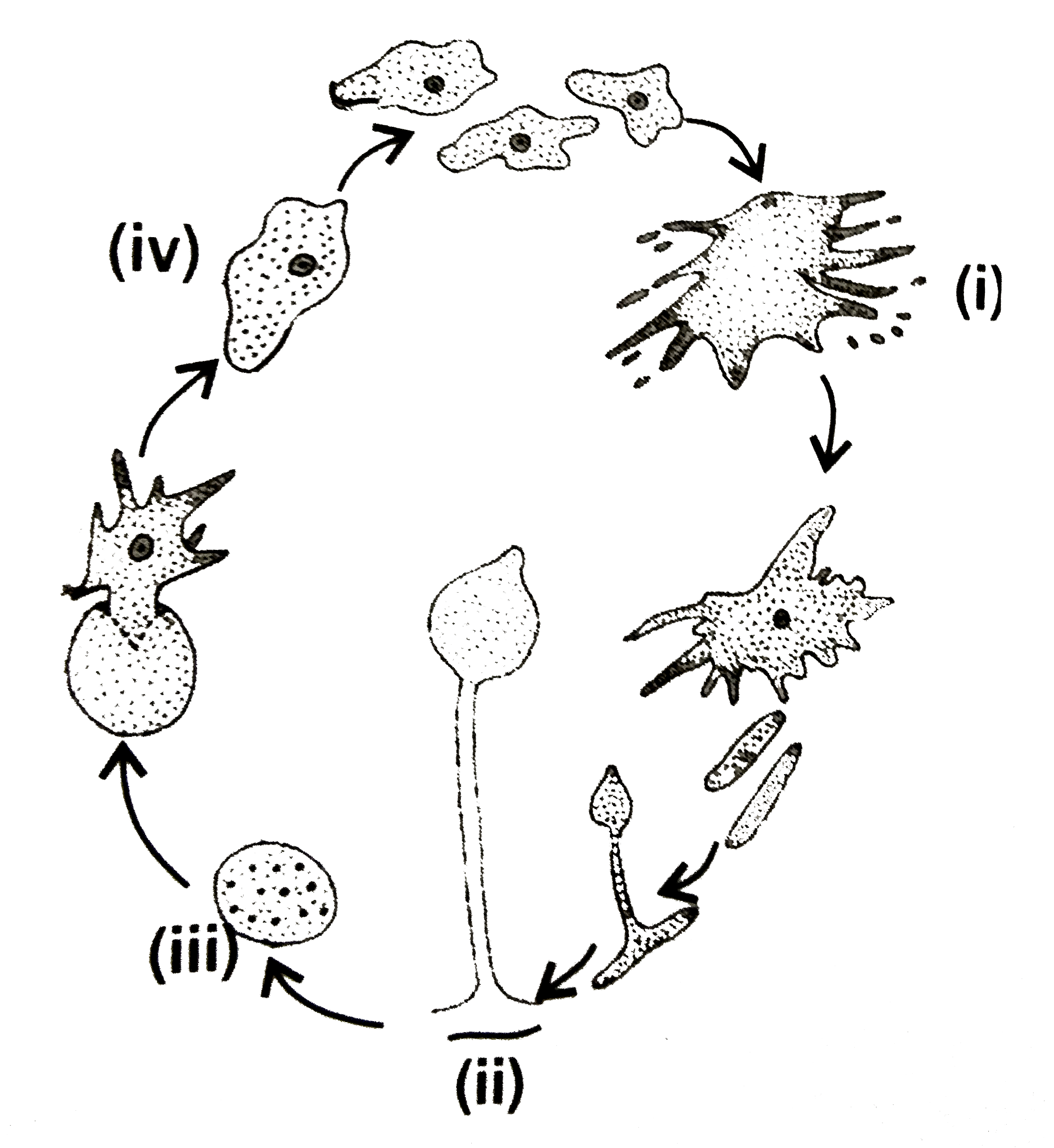Study the given life cycle of cellular slime moulds and select the incorrect option.
 P. Structure (i) is formed in response to drought conditions and exhaution of food supply.
P. Structure (i) is formed in response to drought conditions and exhaution of food supply.
Q. Structure (ii) represents myxamoeba, which rounds off and is converted to a spore.
R. (iii) are uninucleate, haploid sturctures without any cell wall.
S. (iv) are uninucleate, haploid structures possessing a conspicuous xwll qLL.
A
P and Q
B
R and S
C
P,Q and S
D
Q,R and S
Video Solution
Text Solution
The correct Answer is:D
(i)represents pseudoplasmodium. In dry soils, when food supply is exhausted, the haploid amoeboid cells aggregate (without fusion) to form a multicellular plasmodium called pseudoplasmodium. The pseudoplasmodia move as a coordinated unit.(ii)is the mature fruiting body called sporocarp.It bears a single sporangium at its tip.Unlike plasmodial slime moulds, the sporangia of cellular slime moulds are naked.The stalk of the sporangium is straight or slightly curved.(iii)represents spore.Each spore is an ovoid, haploid, uninucleate mass of protoplast covered by a cellulosic cell wall.Spore germinates of produce a single naked amoeba like cell called myxamoeba [shown by (iv)].Myxamoebae are uninucleate, haploid cells, lacking a cell wall but covered by a plasma membrane.
|
Updated on:21/07/2023
Topper's Solved these Questions
- BOOK - NCERT FINGERTPS ENGLISHCHAPTER - BIOLOGICAL CLASSIFICATIONEXERCISE - KINGDON PROTISTA40videos
BIOLOGICAL CLASSIFICATION
- BOOK - NCERT FINGERTPS ENGLISHCHAPTER - BIOLOGICAL CLASSIFICATIONEXERCISE - KINGDOM FUNGI30videos
BIOLOGICAL CLASSIFICATION
- BOOK - NCERT FINGERTPS ENGLISHCHAPTER - ANIMAL KINGDOMEXERCISE - Animal Kingdom148videos
ANIMAL KINGDOM
- BOOK - NCERT FINGERTPS ENGLISHCHAPTER - BIOMOLECULESEXERCISE - Biomolecules137videos
BIOMOLECULES

